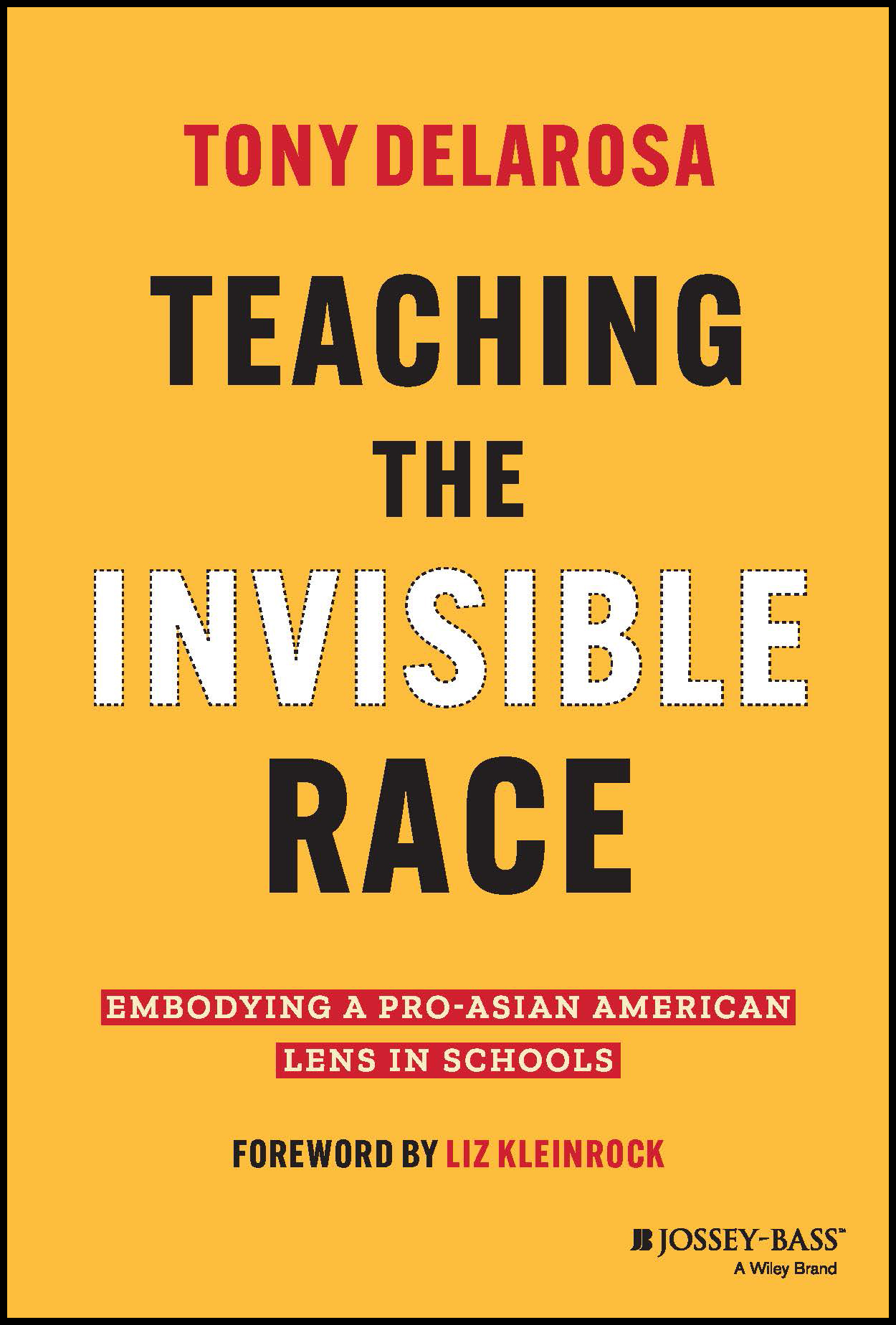'Teaching the Invisible Race' aims to help educators help Asian American students feel seen and heard. Reviewer Lisa Cook praises the book for its ability to empower teachers to identify, respond to, and eradicate anti-Asian racism, hate, and violence.
September 15, 2025
 PHOTO COURTESY OF JOSSEY-BASS
PHOTO COURTESY OF JOSSEY-BASS
The yellow cover is inviting and vibrant; but I was captivated by the title. It begs the question: How can educators help Asian American students feel seen and heard? Tony DelaRosa is a poet, researcher, racial equity strategist, and Filipino American educator who opposes racism and bias. He earned a bachelor’s degree in Asian studies, is a current Ph.D. student, and his expertise is evidenced throughout his book, Teaching the Invisible Race: Embodying A Pro-Asian American Lens in Schools (Jossey-Bass). I appreciate how DelaRosa grounded his work in educational theories and frameworks such as Asian critical race theory (AsianCrit). Similar to critical race theory, AsianCrit acknowledges that systemic racism towards Asian Americans is a part of everyday life. Utilizing Rudine Sims Bishop’s framework, “Windows, Mirrors, and Sliding Glass Doors,” he strives to build empathy for Asian Americans through cultural competence.
DelaRosa offers a self-assessment to help readers identify strengths and gaps in their Asian American history knowledge. He describes the origin and meaning of many Asian American stereotypes and offers ways to combat them. He easily connects many contemporary historical problems to colonialism, such as white supremacy, paternalism, and racial capital. He shares a timeline of legislation that reflects the anti-Asian climate, as well as a timeline of historical Asian American landmark events. However, both timelines promote fundamental knowledge needed to embody a “Pro-Asian American.” DelaRosa coined this term, which entails supporting Asian Americans, embracing pro-Black perspectives, and recognizing that Black activists laid the foundation for this work. He would not be pro-Asian American if he did not celebrate Asian Americans’ contributions throughout history, such as those made in art, poetry, hip-hop, and pop culture.
The book focuses on the stories of Asian Americans from the South, East, and Southeast, such as Jose Antonio Vargas, journalist and author of Dear America, Notes from an Undocumented Citizen. He also draws the reader in by sharing his personal experience with immigration, featuring how one’s undocumented status is the result of immigration policy intended to keep foreigners out. He teaches readers about a myriad of Asian identities, including but not limited to queer and trans identities. He strategically utilizes Audre Lorde’s intersectionality to explain how identities overlap to establish oppressive institutions and provides a plethora of examples. Through the teaching of intersectionality, he confronts the monolithic narrative and compels readers to be identity-conscious.
As an educator, I appreciate how he includes strategies for teaching and collaborating with Asian American families while maintaining culturally responsive and sustaining pedagogy at the heart. He empowers teachers to identify, respond to, and eradicate anti-Asian racism, hate, and violence. He asserts, “We must transform ourselves to transform the world.” The work begins with us. He also argues that we must change our mindsets, from that of a reformist to one of an abolitionist; we must lift the Asian community instead of changing a few laws and/or policies (that give the illusion of real change) to satisfy the masses.
Lisa Cook (lcook38@charlotte.edu) is a doctoral student at The University of North Carolina at Charlotte.